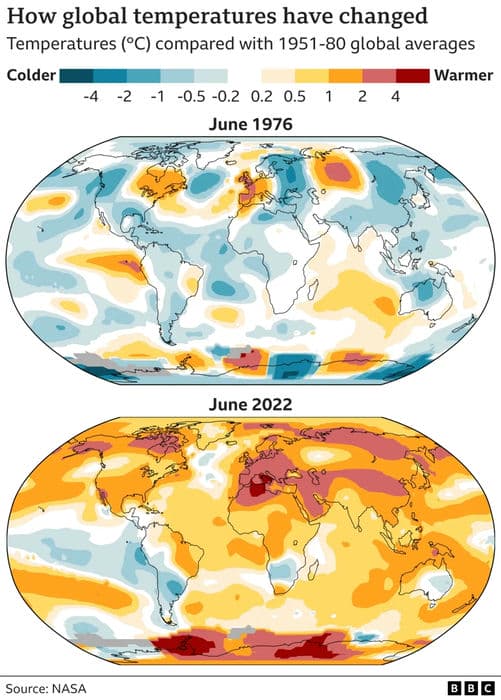
The UK is currently experiencing a heatwave, drawing comparisons to the infamous summer of 1976. While the 1976 heatwave was a significant event marked by high temperatures and severe drought, recent data shows that today’s heatwaves are becoming more frequent and intense. The summer of 1976 saw temperatures peak at 35.9°C, but this has been surpassed by recent figures, with the UK recording an unprecedented 40.3°C in 2022. Additionally, the global reach and frequency of heatwaves today far exceed what was experienced in the 1970s, underscoring the ongoing impact of climate change. Understanding these differences helps contextualize the current heatwave and highlights the urgency of addressing global warming.

Why You Should Consider the Current Heatwave in Historical Context
Visiting the UK during a heatwave offers a unique perspective on the changing climate and its effects on daily life. Comparing the current heatwave to that of 1976 reveals how much the climate has shifted in recent decades. This comparison provides insight into how rising global temperatures are altering weather patterns, making it an essential topic for those interested in climate science, history, and the environment.

5 Key Points to Consider When Comparing Heatwaves
- Temperature Records: The 1976 heatwave peaked at 35.9°C, while 2022 has seen temperatures soar to 40.3°C, setting a new record.
- Duration and Severity: The 1976 heatwave lasted for two months, but today’s heatwaves are becoming longer and more intense, with widespread effects.
- Impact on Mortality: Both heatwaves resulted in increased mortality rates, but the current heatwave’s higher temperatures pose even greater risks to public health.
- Geographic Spread: The 1976 heatwave primarily affected the UK and France, whereas recent heatwaves have had a broader global impact, affecting many more countries.
- Climate Change: The frequency and intensity of heatwaves have increased since the 1970s, with the UK becoming 0.9°C warmer on average over the past three decades.
Frequently Asked Questions
- How does the 2022 heatwave compare to the 1976 heatwave?
- The 2022 heatwave has surpassed 1976 in terms of peak temperatures and geographic spread, reflecting the growing impact of climate change.
- Why are heatwaves more frequent now?
- Climate change has led to rising global temperatures, making heatwaves more common and severe.
- What were the effects of the 1976 heatwave?
- The 1976 heatwave caused a significant drought, water rationing, and a rise in mortality rates, similar to the challenges faced today.
- Are the current heatwave concerns exaggerated?
- No, the current heatwave concerns are not exaggerated. The higher temperatures and broader impact reflect a real and growing threat from climate change.
- What can we learn from the comparison between 1976 and now?
- The comparison highlights the accelerating pace of climate change and the need for urgent action to mitigate its effects.
